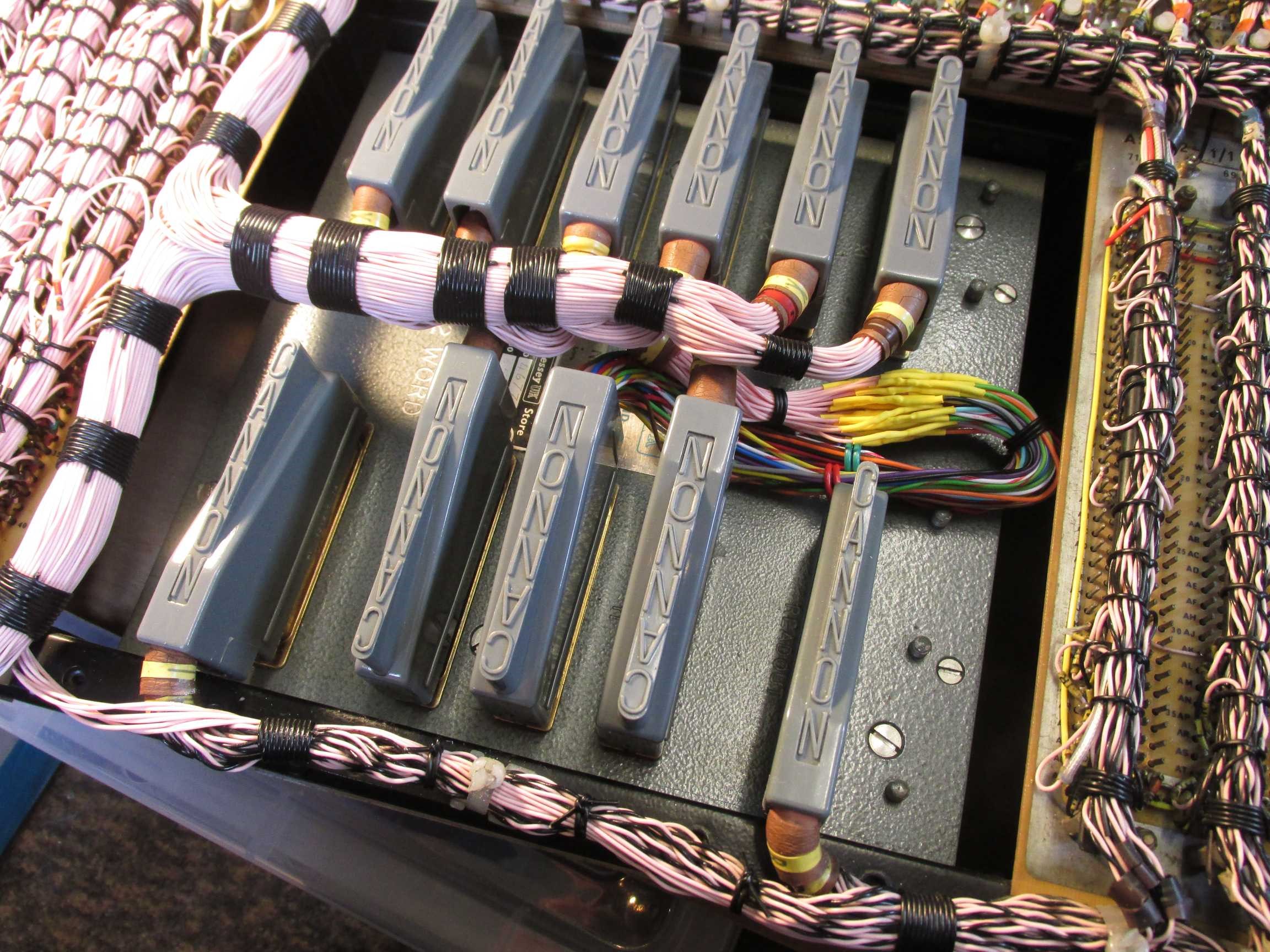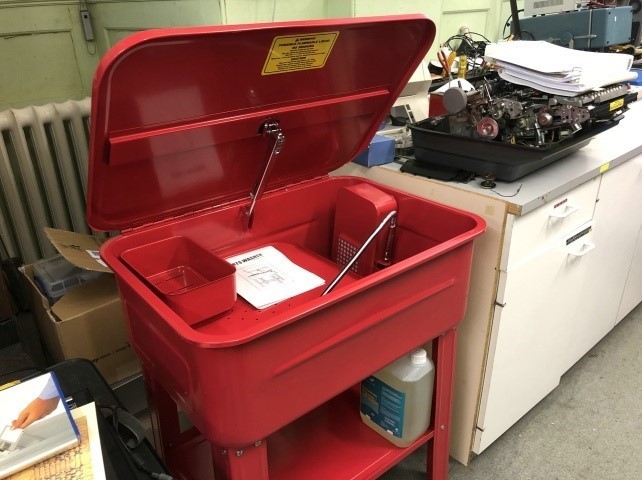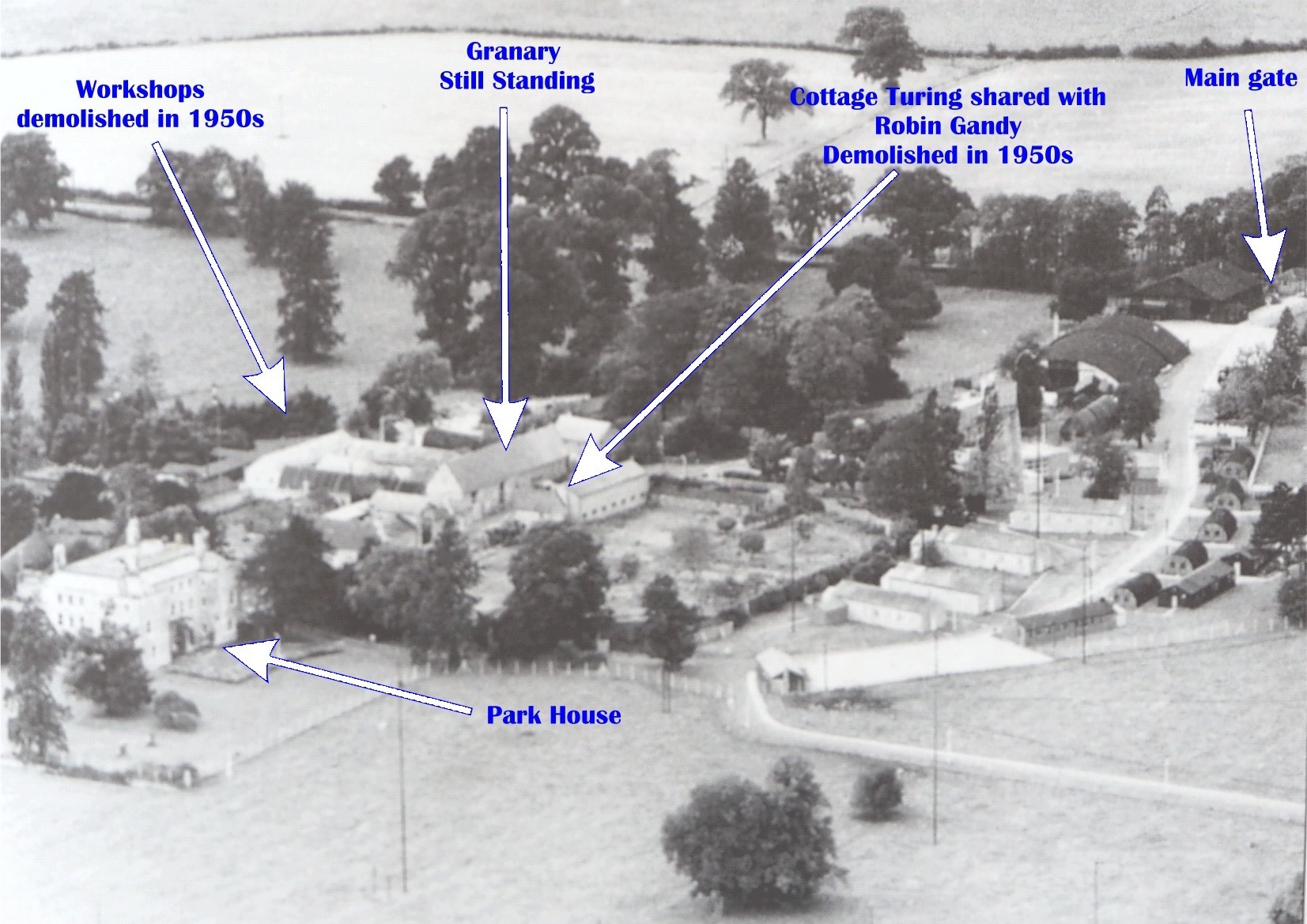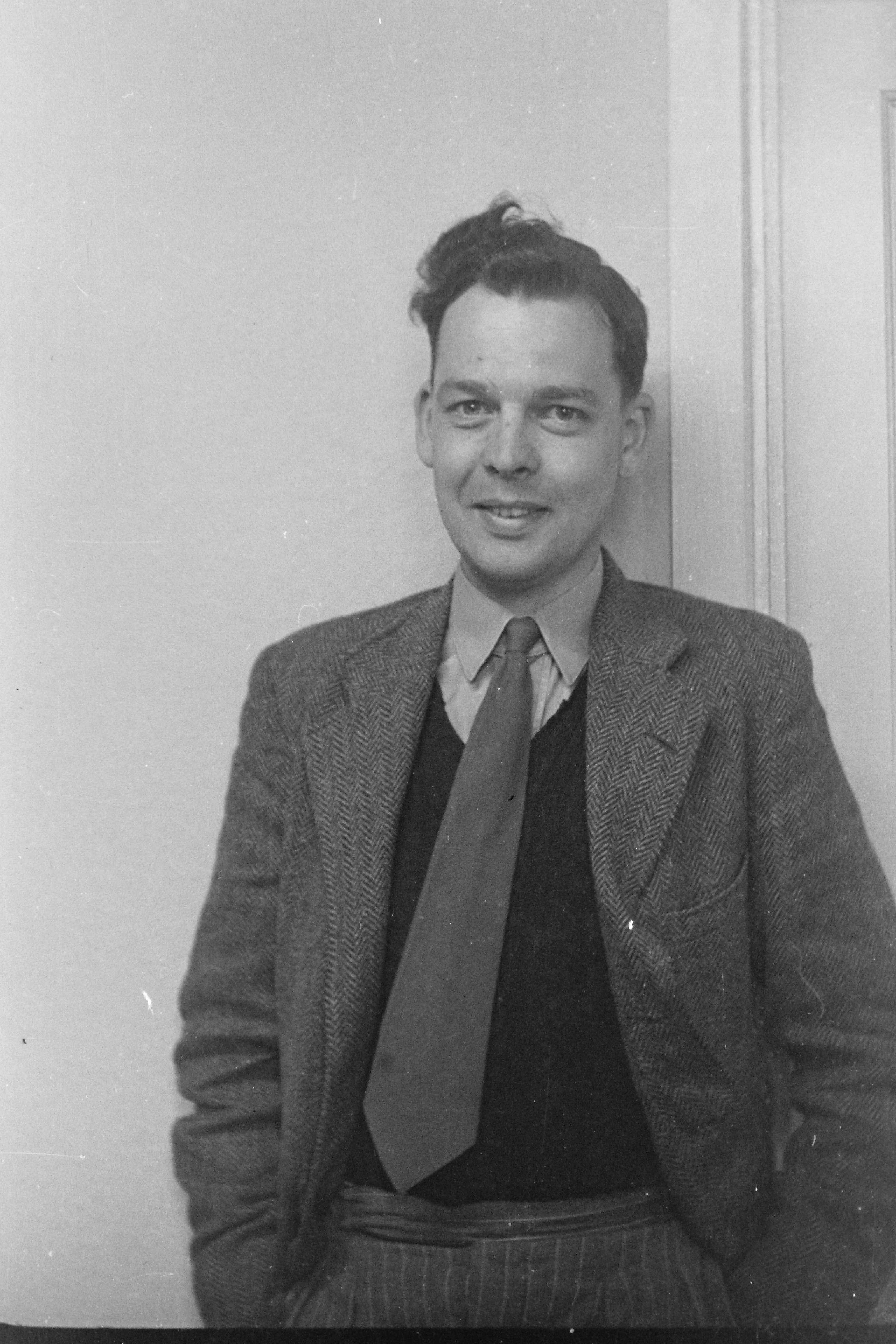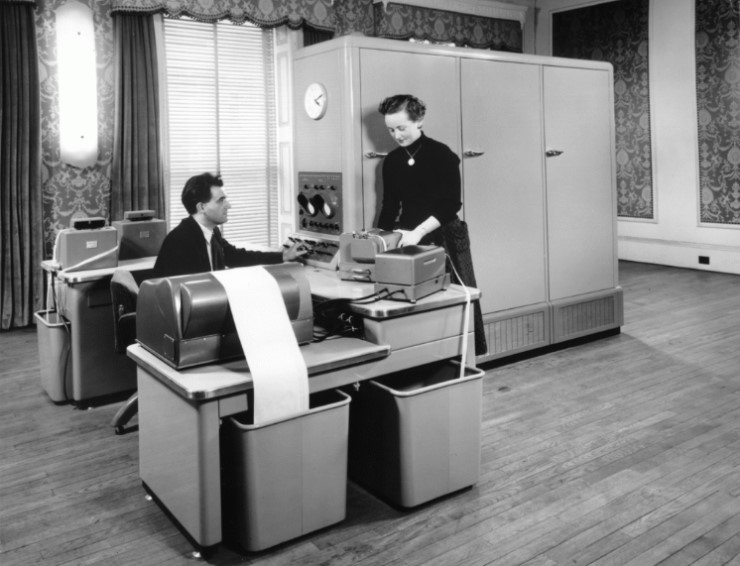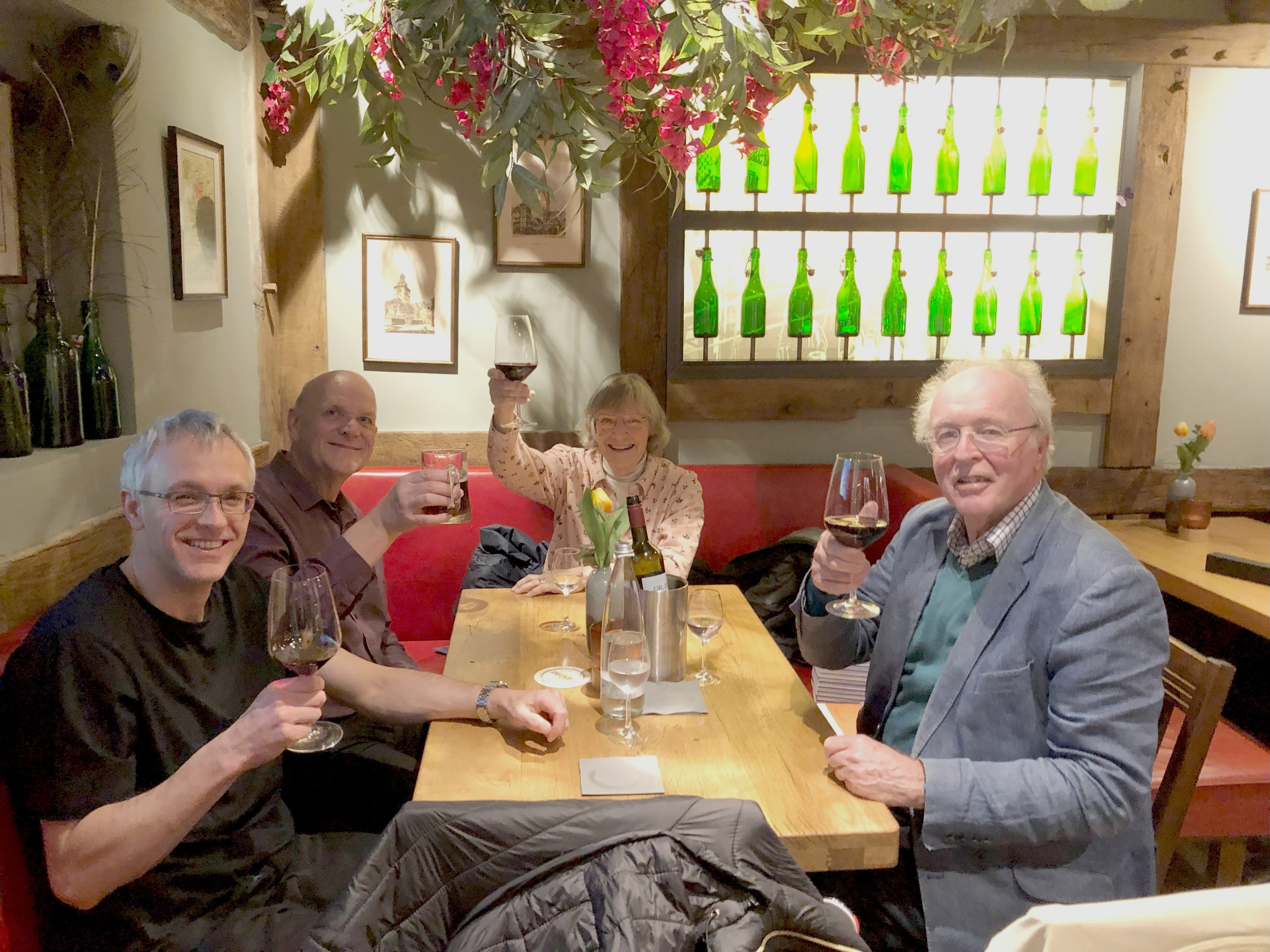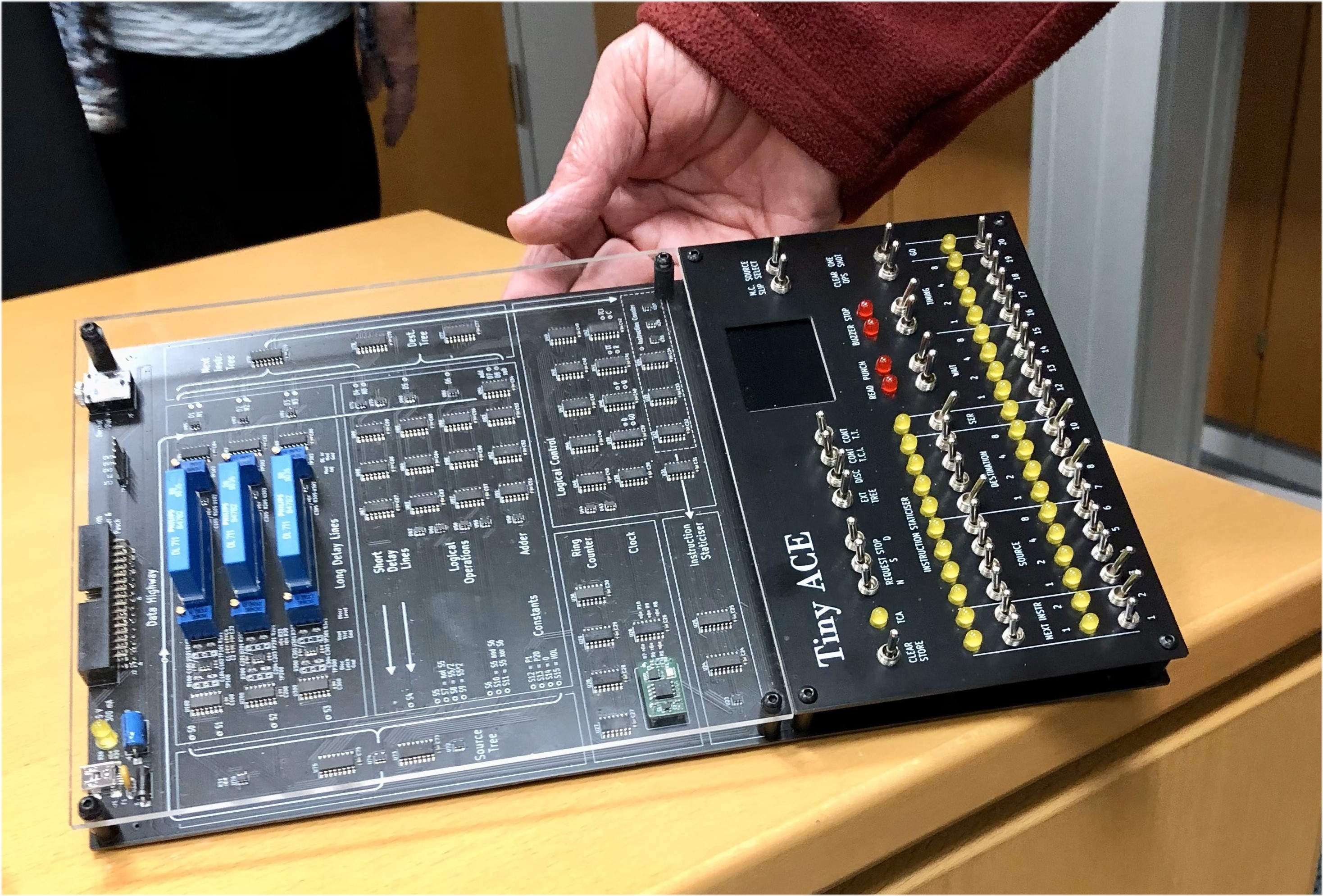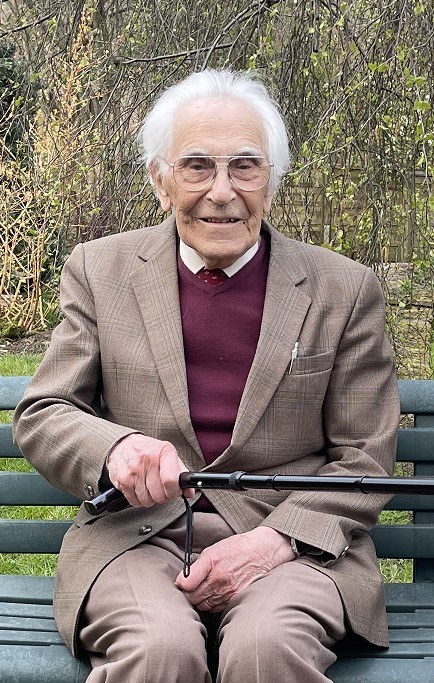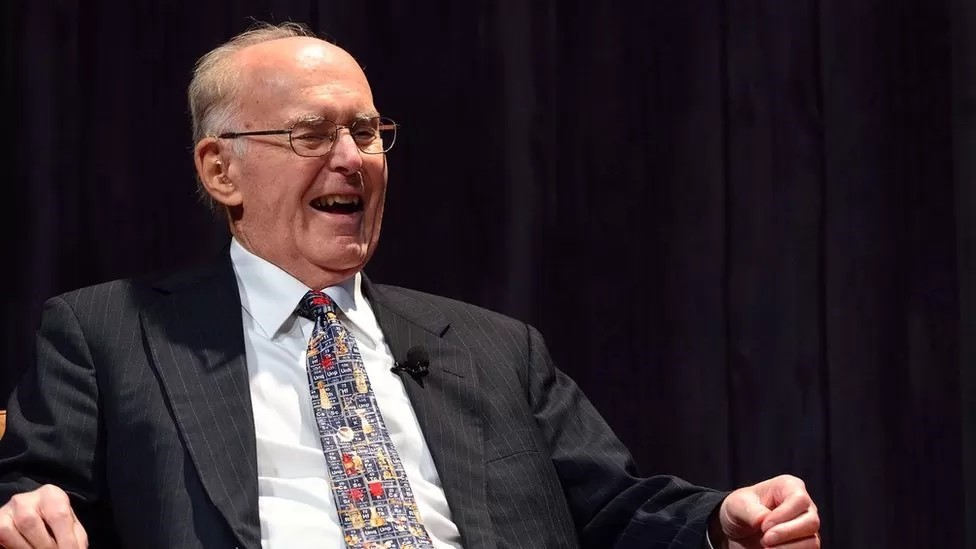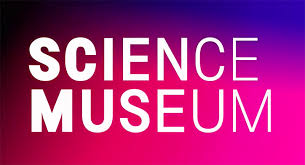| Resurrection Home | Previous issue | Next issue | View Original Cover | PDF Version |
Computer
RESURRECTION
The Journal of the Computer Conservation Society
ISSN 0958-7403
|
Number 102 |
Summer 2023 |
Contents
| Society Activity | |
| News Round-Up | |
| Delilah Voice Secrecy System [part 2] | John Harper |
| Using Pegasus to Automate UK Banking | John Wallace |
| CCS Visit to the Heinz Nixdorf MuseumsForum | Rachel Burnett |
| Obituary : Charles H. Lindsey | Gillian Lindsey |
| Obituary : Gordon Moore | Dik Leatherdale |
| 50 Years Ago .... From the Pages of Computer Weekly | Brian Aldous |
| Forthcoming Events | |
| Committee of the Society | |
| Aims and Objectives |
Resurrection SubscriptionsThis edition of Resurrection is the last of the 2022-3 subscription period. Subscribers will need to renew their subscriptions to continue to receive Resurrection on paper. Most recipients of the paper edition do not need to subscribe. Go to www.computerconservationsociety.org/resurrection.htm and follow the flowchart if in doubt. And if you do need to subscribe, the links so to do are there also. |
Society Activity
|
EDSAC — Andrew Herbert We are still struggling with making store addressing work reliably, although improvements have been made. Until this is resolved it is hard to progress in other areas, in particular the Transfer Unit. Further (re-)commissioning of the Arithmetic Unit has continued, mostly replacing valves that have died in the several years since the unit was tested standalone. Some minor modifications have been made to improve the working of the interface with Main Control. We have connected the Initial Orders system and shown it correctly sends data to the Main Output Bus when operated, but it is not yet connected into Main Control. We still depend on the modern “Signal Sequence Injector (SSI)” to put programs in store. This unit has also had its problems but is now back in service. The Engineers’ Switch panel has now been commissioned so we can have EDSAC executing single order read from the switches either single stepped or repeatedly from the Operator Control Panel. This is a useful additional debugging aid. Progress continues to be made with commissioning and standalone testing of the main store delay lines. As more of the machine is in operation we are starting to bump into an anticipated problem of synchronisation between sub-systems. All outputs end up on the Main Output Bus as inputs to the Transfer Unit and we can already see some divergence between the timing of different sources. If these divergences are sufficient to cause problems we may need to add additional delays to bring things back in line. (Until we fully commission the Transfer Unit we don’t have a Main Input Bus, and it can be anticipated there will be similar timing issues here also.) To offset the perhaps gloomy tone of the above, we should remind ourselves that the Clock and Digit Pulse system, the delay line recirculation system, Address Coincidence detection, Main Control, Order Decoding and Display Units are all running reliably with very occasional failures due to valve mortality. Fault finding in a known previously working system is much more straightforward than it was during the commissioning process when we were also knocking out design and construction faults as well as component failures. The monitoring group has made some progress with collecting data from the EDLA monitoring units via WiFi to a Raspberry Pi base station. The intention is that data streamed from multiple EDLA units can be collected for offline analysis to look for trends, e.g., signal drift, jitter or attenuation and to check for consistency across multiple signals (e.g., that data read from the store corresponds to what was previously written). |
|
Ferranti Argus/Bloodhound Missile System — Peter Harry It’s been a busy six months as we had to vacate our hideaway at RAF Cosford and move, the reason being that the pre-war hangar we occupied had been condemned on H & S grounds: there was a risk of concrete blocks falling from the roof. We had planned to move during this summer anyway but we had no option, we had to move sooner than planned. At the end of January a convoy left RAF Cosford for our new home at the RAF Air Defence Radar Museum, Neatishead. An overview of the restoration project at ccsoc.org/blood0.pdf is for interest only but it does include a photo showing the Engagement Display Console with one of the Argus computer racks in the background. There is still work to do at Neatishead on displaying the Bloodhound items, but the Argus 700 system is working and ready for public display and demonstrations of how air defence was conducted in the UK during the Cold War. The restoration has been privately funded and enabled through people known to us. Returning to the Argus 700, more time is now available to focus on the Argus 700 and work on two main activities:
Repairing some of the Argus 700 and other PCBs can be straightforward, but others are complex without original test documents. Most problems are with mother/daughter sets which are joined using numerous individual AMP pins and sockets, a suspected source of many a fault. We have already dealt with the non-availability of spares for the original Wren 1 Winchester (FINCH) disc. We do keep the original equipment and presentation in the computer rack but hidden away is a small PCB emulator. The main challenge now is the original 20” CRT display monitors with slow scan, which have no modern equivalent. The vulnerability here is no flyback transformer or CRT spares. Two options are available. Develop a converter to take the existing RGB video and transform to HDMI or whatever. Alternatively, take the serial stream of HEX code to the graphics controllers and transform to a common graphics language. All thoughts for now but would welcome any input on the graphics challenge; perhaps I should provide more information? |
|
ICL 2966 — Delwyn Holroyd An update on the 7181 terminal: readers may recall the scan board developed a fault whereby the sub-raster or ‘jiggle’ scan failed with a resistor on the primary side of the transformer burning out. The fault was eventually determined to be the switching transistor on the primary side, which wasn’t fully turning off. A suitable replacement was found and the scan board and terminal restored to operation. However this prompted a renewed effort to find replacement secondary side transistors for the spare scan board. These transistors have a very demanding specification as they switch at 1.25MHz but must handle at least 80VCES (reverse voltage limit). The original transistors were house coded, so it was unclear if there may be a commercial equivalent. In order to switch off from fully saturated at this frequency, the transistor must have a storage time of an order of magnitude less than a typical BJT – around 10-20ns ideally. This type of transistor is known as a high speed saturated switch, and they were not very common. But now at last I can report some success in this long running saga. I have been searching for a replacement for an unknown house coded transistor type. The first breakthrough was finding an extensive searchable list of old transistor types online. This enabled me to identify a number of different types of transistor designed for high speed saturated switching, but as I had discovered in previous research none of these had the required current and/or voltage ratings. I then discovered the BSX59, which is actually described as a magnetic core memory driver. However crucially, the datasheet specified the off time as 60ns max. It also has a 1A collector current rating and is in the correct package. The only potential issue was VCES 60V max. This being by far the closest match I had found to date, I decided to get some in for testing (amazingly most of these old types can still be found online with relative ease). I found that the actual breakdown voltage was approaching 90V and the storage/off time was ~30ns –this was looking very promising! Sure enough, when fitted in the spare scan board these transistors proved to work perfectly. I am now reasonably confident that the original house coded type was probably a binned version of this transistor (or similar), selected to ensure they have a sufficiently high breakdown voltage. Recently a hard fault developed which prevented booting the machine from the disc emulator. It could have been one of a number of DCU boards but was found to be one of the actual disc controller boards, which has now been replaced with a spare. |
|
Harwell Dekatron — Delwyn Holroyd In my last report I mentioned the machine had developed a fault concerning returned carry B (RCB) pulses, the upshot of which is the pulse generator won’t circulate. Last seen in November, the fault returned in the middle of March, but still disappears after the machine has warmed up sufficiently, making it very hard to track down. In the course of fault-finding I did discover a dry joint in one of the carry units which may have caused intermittent stops. I’m pleased to report that the fault has now been tracked down to tired carbon resistors in one carry unit and another dry joint in a different carry unit. Since resolving this problem the machine has been operating reliably. However a different problem has now been reported to the team – most of the digits on the control panel have stopped working! Luckily it is still possible to load programs from tape. |
|
Software — David Holdsworth Server sw-pres.computerconservationsociety.org I am still in the process of rationalising material on this server. I regard the LeoIII material as constructed as I would wish. I have replaced all references to sw.ccs.bcs.org (of which more later). There is an added motivation for this exercise because the sw.ccs.bcs.org server was shut down in April. I have now rationalised access to the scanned images of printer listings and original manuals so that the free standing system has access to these on-line, or one can choose to copy the lot (about 2.5 Gbytes for Leo). All the scans are held in a subdirectory IMG. This makes it possible to reference these bulky image files from the free-standing system, without incorporating this bulk in the user’s download. I have reworked the KDF9 manuals. Free-standing Webserver Emulation System I still have issues with portability of Windows binary programs when compiled by gcc. This relates to the location of the dynamic-linked library CYGWIN1.DLL. I have ways of making it work, but which require the end user to use the command window. I take the view that this is not a problem for an end user who has gcc, because such a user would already be familiar with the Windows command interface, and could in any case do their own compilations. However, I encounter many Windows users who never use the command window. This rather goes against my goal of minimising the need for knowledge by the end user. There is a path through the installation instructions which does not use the command window. See: sw-pres.computerconservationsociety.org/misc/readme.htm. |
|
Elliott 803, 903 & 920M — Terry Froggatt After some frustrating weeks at the start of the year fixing problems on the “modern” computers in the Froggatt household, I’ve restarted my work on the reverse-engineering of the 920Ms. Working out the wiring on the eBay 920M (5343) took “pins-squared” time. Now I’m checking this wiring against the RAA/TNMoC 920M (88) in faster “pins-linear” time. So far no significant differences have been found. I now understand the control panel interface. When I worked on the Jaguar flight program using MCM2 & MCM5 variants of the 920M around 1970, my memory is that the control panel was the same as that used on the 920B or 903. But the MCM7 variant’s interface is certainly different, and from a document recently received from Bob Eager, it looks the same as Socket F of a 920C or 905 control panel. This raises the possibility, if I get the RAA 920M working, of attaching it to TNMoC’s unused 920C control panel, with just the Accumulator displayed via the multiplexed display input on Socket G. However the cost of the connectors may prove prohibitive. The TNMoC 903, “011y”, appears to have been behaving for some time now, surviving one incident when it was switched off by a member of the public. My own 32K 903 is now back in working order. I replaced the D50 connector and rotten wiring pictured in Resurrection 100 using a new D50 connector and 50 fly-leads. Other 903s might need similar attention in future, and it is not an easy task.
Peter Onion reports that the TNMoC 803’s 13. 5V self-oscillating inverter has needed some attention as it was failing to start oscillating quickly enough. This stopped the machine from turning on because the +10V supply was not stable within 160 mS of turn on. The Paperless Tape Station interface is now able to handle eight bit-tape images. This is a “pure” eight-bit interface which is strictly not correct as a real Paper Tape Station fitted for eight-bit input actually performed parity checking in hardware and only delivered seven data bits to the CPU. So far the only use has been to produce an eight-bit version of the fast loader and to produce an eight-hole virtual tape file of the HCODE compiler tape. This of course loads significantly quicker as each 803 39-bit word only takes five × eight-bit characters rather than eight × five-bit characters. A few weeks ago the output transistor in one of the store inhibit drivers (called SZ2 elements) went short circuit. This caused the associated termination resistor on the SAD board to overheat. Despite this being the first time for such fault to occur for many years, Peter immediately recognised the smell. John Sinclair told him the following story about these faults: “The very first time I went abroad was to Zurich to fix the exactly the same fault. The engineer took me on site and turned the machine on, and within minutes there was that smell of a blue painted resistor. I could tell him exactly where the fault was without opening a door!” |
|
ICT/ICL 1900 — Delwyn Holroyd, David Wilcox, Brian Spoor, Bill Gallagher Bill reports he’s been spending some time away from the emulation coding coalface. He has used the time to become more familiar with material received, especially in the areas of PF56, 1901A, 1902A, E3NG (George 3 executive for Stevenage machines) and E6RM (Operators executive for West Gorton machines). 1900 CESIL (Computer Education in Schools Instructional Language) Brian has been busy on a new project – he takes up the story below: I was contacted by David Bonham as to why CESIL was not in the list of available languages detailed on the 1900 website (see www.icl1900.co.uk), now corrected and hopefully to be further updated. This was something I had never come across and investigated, getting much useful information from David and his website (see www.iclces.uk). CESIL was created by the ICL Education division (ICL-CES) based at the Euston Road office (LON24 from memory) as an introduction to computer programming in the late 1960s. I have managed to obtain second-hand copies of ICL-CES Computer Education in Schools, Computer Studies, Books 1 & 2, texts to work towards ‘O’ and ‘A’ levels and found them extremely well structured and written, if somewhat dated in content. Today they might be more appropriate for Primary KS2 students, if you ignore the batch processing element. Book 1 starts with programming in CESIL, moving onto using BASIC. Book 2 is BASIC only. The languages described in these books are implemented by:-
At this time the binary version of #JCES appears to be lost, but we do have working copies of #JBAS. However, CESIL is not totally lost. I have found a CESIL implementation on a web archive (see ccsoc.org/icl19000.htm) and installed version 2.0, which runs under Windows 10 without any apparent problems. David has located the source code (just under 1000 lines of well commented PLAN) for the believed lost CESIL compiler (#JCES) in the back of a book Documentation of the CESIL Compiler / Computer Education in Schools, ISBN: 0903885085 held in several of our UK copyright libraries and has managed to obtain a photocopy which is now being retyped. In the meantime, until we can hopefully reimplement the original version of CESIL, I started with a new pad of coding sheets and a freshly sharpened pencil, first creating a CESIL to PLAN translator for the 14 instructions and single accumulator available in the CESIL language. The translated source could then be compiled and consolidated with a newly created runtime library. This translator then progressed to a full compiler producing semi-compiled output to disc, suitable for input to the standard disc-based consolidators (#XPCK/#XPCL) to create a binary program. The compiler imposes similar limits to the original CESIL interpreter, but there is no reason why these limits cannot be extended. We now have a new working compiler #BCES for CESIL, at just under 1700 lines of PLAN, which is the subject of further destructive testing. 7210 Inter Processor Buffer (IPB) David reports he has been able to run two E6RM systems with disc twinning and with this configuration he can run #N210 on both systems talking to each other over two IPBs. This will run for several hours without any error. He has also been able to get E6RM and George 3 to talk to each other and initialise the twinning but #N210 throws up errors after a period of time. He now has a working IPB on both E6RM and G3. The last piece of the puzzle turned out to be a bad interaction between the test program and G3 when running over two IPBs. The test program uses the same names to link processes across the IPBs. E6RM is quite happy with this but G3 was sometimes giving responses to the wrong link. There is documentation which suggests that George is actually correct and E6RM has additional protection to avoid this problem. The fix, in this instance, was to enhance the test program to ensure that the link names are unique across each IPB. |
|
IBM Museum — Peter Short
Curators have clubbed together and purchased a parts cleaner. Whilst it is large enough to hold even the largest of our typewriters it will also be very handy for smaller parts. 40 year old IBM No. 6 oil is rather more like Gloy adhesive, for those of us who remember the little bottles with the slotted rubber cap. It remains to be seen how well it tackles a Selectric I/O typewriter – first victim is visible on the workbench. The only caveat is the detergent doesn’t agree with aluminium, where it has to be washed off pronto. Our new curator has been working through our collection of PS/2 P70 portables and PC Convertibles, testing whether they are in working order. We do have more of these than we need, several working, and could donate to a worthy cause. If anyone is interested please contact Peter S. I am hoping to get to see Jim Austin’s Computer Sheds this year, so we should be able to offer him one of each. We continue to sort through thousands of photos and slides. All interesting hardware photos are scanned and will eventually arrive on the photo archive website. We are in discussion with Hursley about what to do with these photos once scanned. We recently marked the very final withdrawal of IBM from Greenock, with employees at the Pottery Street building moving to Glasgow. There’s a copy of the Greenock Telegraph report at ccsoc.org/ibm0.htm. A selection of photographs of the Greenock plant can also be found at ccsoc.org/ibm1.htm. |
|
Analytical Engine — Doron Swade The last report to appear in Resurrection was over a year ago. It has been a while. So, a brief recap on where we are and what we propose to do. Recap The mission of the project is to build a Babbage Analytical Engine for historical and educational purposes. Babbage left no single definitive design for an Analytical Engine. Instead there are drawings (called Plans) that Babbage drafted to record developmental staging posts as his ideas evolved over a period of some 40 years. We regard an understanding of these Plans, and the design trajectory they represent, as a prerequisite of what could meaningfully be built i.e. which signature features of which design we should combine to create a machine that would best convey Babbage’s conception of an automatic digital general purpose computing machine in the 19th century. In November 2021 I reported that Tim Robinson in the US had completed the most comprehensive description yet of the Analytical Engine. The work is a product of five years research founded on a detailed review of the entire Babbage technical archive. The work analyses the workings, design and development of the machine, with a running evaluation of levels of conception, completeness, and of mechanical detail. The account runs to some 120,000 words and describes six phases of development from 1832 until Babbage’s death in 1871. Since then, Tim has extended the analysis with a description of the Selecting Apparatus, a key feature of how Babbage implemented division using the selection of multiples of the divisor to be subtracted from the dividend to determine each next digit of the quotient. The description of the designs and their development adds some 6,300 words to the earlier account. With the addition of this description, the whole account positions us to finally advance the project to the next stage – specifying what to build. Way Forward We need to expand the team to include expertise we currently do not have: animation and modelling skills for simulating mechanisms, and that of mechanical engineers. In February 2022 we sought to grow the team by inviting a promising party to engage and collaborate with Tim to develop and refine the account so that it could serve as an induction and briefing document for new team members, and as the foundational reference source for design and construction. By October 2022 it was evident that this first recruiting attempt had not ignited. Putting in the time and effort into preparing Tim’s account for release into the public domain would have the significant benefit of capturing and preserving the substantial advances in understanding, allowing it to serve as a launching pad for subsequent implementation. Preparing the treatise for publication for use by others would well serve both history and Babbage studies but would delay implementation by several years. The loss of momentum this would entail is a significant concern. We need to attract new people committed to the mission of building a Babbage Analytical Engine and motivated to engage in the technical design challenges. We then need to attract resources to fund the project once such folk are found. There is currently no organisational body or institutional structure in whose name we can do this, or that can host the project or its future team. So we propose to release, in piecemeal form, summary findings of Tim’s account. We propose to do this through the Plan 28 website (blog.plan28.org) which has carried progress reports of the project, and is the main platform of communication with the community of people who have so far expressed interest in, and support for, the venture. Tim will post instalments each month summarising his descriptions of the design, insights into Babbage’s thinking, challenges, difficulties, and analysis. We hope that by sharing exposure to Babbage’s thinking in this way, an appreciation of this remarkable unbuilt machine will spread and reach those motivated to participate in its physical realisation. |
|
SSEM Replica — Chris Burton The SSEM replica continues to be demonstrated to young and old visitors, normally reasonably reliably. There are days when the machine repeatedly runs correctly for up to half an hour or more, and yet other occasions when unexpected stops occur every few minutes. Typical faults found are loose connections, defective valves (rarely), and components drifted a long way from spec. Several new volunteers have joined the team and have started their training about the history of the original “Baby”, engaging with visitors, and detailed understanding of how the equipment works. It is hoped that this influx will progressively help demonstrations on more days per week, particularly the possibility of weekend working. |
|
Delilah Voice Secrecy System — John Harper We have now managed to transfer enciphered voice over a short length of wire. Therefore it can be said to work but the whole system needs very careful set up which is hard to maintain. It is possible that we have reached a similar position to that achieved by Turing and Bayley in 1945. We now need to decide if we should follow up on some of the improvements and developments suggested by Alan Turing. Part of the scramblers from a CCM (Combined Cipher Machine) has been made to very high standard by Hanslope manufacturing. It is hoped that more detail can be made available from the States to replicate these scramblers accurately. Our latest problem is that there is too high a 4Khz tone on the output to the headphones. 4Khz is the basic frequency from which all others are generated but it should be suppressed at the output. We have had expert help from Hanslope Staff who have said that the simple output chokes that we originally fitted were not up to the filtering level required. Alternatives have been made and tested but before we leave the subject another member of the Hanslope specialists is about to run a full software simulation of this part of the output filter. |
|
The National Museum of Computing — Aneesa Riffat We have been steadily working through the collections and TNMoC and this overdue project has been shining a light on what we are collecting, how we are collecting, and why. With an estimated 76,500 items across our hardware, software, social history and archive, the collection has grown and continues to grow with offers of donations coming in weekly. The collections work up is critically allowing us to understand our collecting gaps and to work to fill them. Collections Management procedures are now following that of SPECTRUM 5.1. By implementing these procedures, it has allowed us to act uniformly in accordance with all other UK museums. We are on track to submit our application in October 2023 to become a Nationally Styled Museum. [This is the first report from the pen of Aneesa Riffat who has recently taken up responsibility for liaison between CCS and TNMoC. The first of many we hope. Welcome Aneesa! – Ed] |
Help NeededLee Wittenberg and Martin Campbell-Kelly have developed an open-source version of Martin’s EDSAC simulator, and are in need of beta testers. This new version of the simulator is written in C++ using the Qt toolkit to implement the GUI. It was developed on Linux, and has been compiled and successfully run on both Intel Macs and Windows (but only minimally tested on these). Anyone interested should contact the authors at qedsac@outlook.com |
News Round-UpOnce again we are indebted to our energetic friend Herbert Bruderer who has recently published an interesting review of 400 years of mechanical calculators. See ccsoc.org/bru14.htm and enjoy. 101010101 Peter Byford of the Leo Society writes to let us know that Ray Shaw. the last of the LEO l designer/engineers, passed away late last year. The Society’s excellent obituary may be found at ccsoc.org/leo1.htm. 101010101 We are pleased to announce the recent arrival of a new Ferranti Mark 1 emulator implemented by Roberto Sancho Villa. The author has posted the emulator on GitHub and has asked us to add it to our “zoo” of emulators at www.computerconservationsociety.org/software/software-index.htm . The emulator is particularly interesting in that it comes with a range of Mark 1 software all from original sources –
The inclusion of the AUTOCODE compiler is very significant representing as it does a major step forward in the development of accessibility to computers. |
Contact details
Readers wishing to contact the Editor may do so by email to
Members who move house or change email address should go to
Queries about all other CCS matters should be addressed to the Secretary, Rachel Burnett at secretary@computerconservationsociety.org, or by post to 80 Broom Park, Teddington, TW11 9RR. |
|
In the 1960s banks were pushing technology to its limits as a result of more people opening bank accounts and the Payment of Wages Act, which allowed employers to pay certain workers in methods other than cash, including cheques and bank deposits. This led to extraordinary developments using computers, as the first steps were taken to introduce Credit Clearing: paying in at any bank branch to another bank’s account. Back in 1960, John Wallace, who would later rise to head of Group IT at NatWest, began work to automate the first branch of a UK Clearing Bank, the National Provincial (NP) using a computer system, initially the Ferranti Pegasus. John joined NP in 1951 after leaving school and learned the trade stoking the boiler and taking spare cash to the Post Office with a colleague and a truncheon. Less than ten years later he was one of four staff working with Ferranti on a Pegasus serving five branches in London.
Below is an edited account of John’s experience using the Ferranti Pegasus, taken from his notes of a presentation to the British Computer Society in Year 2000 and a full-length interview to be published on Archives of IT.
Why Pegasus? In the early 1960s Ferranti was a market leader, with about 25% of computers in the UK installed base. Pegasus was produced from 1956-1962 and was one of first low cost, medium sized, multi-purpose computers. Designers adopted the package approach, which meant quick repair times by having replacement modules available. Ferranti invited NP to carry out an experiment in 1960 using the machine and made the same offer to Westminster Bank. During the experiment the Ferranti headquarters was visited by the Chief Cashier of the Bank of England, Lord O’Brien (later to be its Governor) and many bank directors who were amazed that a tape from the branch could be sent to another building and the results returned. The experiment was deemed successful, so NP ordered a Ferranti Orion: the most advanced machine of its time. However, there were delays in delivery, so NP decided to get as much experience as it could with a Pegasus 2, which was installed in 1962 in Basinghall House. The results were that in September 1962 New Bridge Street became the first bank branch with computerised bookkeeping. That was followed by Strand, Lincoln’s Inn, Aldwych and Park Lane, all gaining invaluable experience until the Orion was handed over in May 1964. The People In 1960 NP appointed Ralph Hopps, Chief Inspector’s Assistant, to set up a unit within NP to assess how computers could be used in banking. Four bank clerks were selected from branches by Ralph, trained by Ferranti as designers/programmers, who built the initial bookkeeping branch systems, wrote and implemented the programs and converted the mechanised systems. He appointed two clerks from City Office who had NCR Postronic experience, as well as myself and Dave Hughes. We went on a programming course using basic machine language and had total responsibility for developing systems, preparing and converting branches. We were the four most empowered clerks in NP and had lots of authority as no-one in the bank really knew what we were doing! The computer input was produced by paper tape on a daily basis as a by-product of accounting machines. Cheque reader sorters hadn’t been developed then. The Computer Hardware System Pegasus was a large valve machine: slow with operations in milliseconds. Air conditioning was achieved by opening and shutting windows. Humidity was controlled by switching the electric kettle on/off and planned maintenance was several hours per day. There were two cathode ray tubes on controls at the front of the machine and if the program stopped a binary display gave location and content. If the reason was even parity, we’d remove the offending panel and replace it with a spare. Data and programs were stored on magnetic tape and read down to a magnetic drum. A drum had 7K word capacity and took 16ms to rotate. There was a small immediate access store (ferrite core) of seven blocks of eight (39 bit) words plus accumulators to hold counts and modify instructions. Two program instructions could be held in one word. Transfers between the drum and core were very slow and a clever programmer would optimise his program to ensure the block he wanted was coming up to the drum heads as the program reached an instruction to transfer. All input to computer and output was on five-hole punched paper tape. Branches created most of the input on accounting machines and output was fed into Flexowriters to print branch information and customer statements. Branch Preparation Account numbers were in the seven digits format – and a modulus 11 check digit – and shown on the cards, with three types of account – current, savings and loan. Vouchers needed to be personalised with account numbers in advance before issue to customers, and that was done in branch using embossed plates in an Adrema machine (Adrema was a well-established office ADREssing MAchine). Shortly afterwards, the E13B standard was introduced, with automatic reading of magnetic inks. Ledger sheets were carbon copies of customer statements: information we didn’t want customers to see was stored elsewhere. A Kardex index was set up for other information – including occupation, mandatory instructions etc – and held in alphabetical order in cabinets of sliding trays. Another card system was set up prior to transferring to the computer in account number order giving names and designations of customers. This complemented the other Kardex and was used for take-on of basic data. This and other data were sent to Basinghall House for punching into paper tape. On D-day the branch would balance the books, list all balances and send input tapes to Basinghall House. The whole process took about nine months. Achievements The branch bookkeeping system formed the basis of the Orion system that followed and processed 100,000 accounts. A cheque clearing system was developed in parallel using IBM 1400 systems and then when compatibility became an issue we decided that IBM 360 was the way ahead. Much of what was done in terms of standards and systems design still holds good today and it wasn’t achieved by technocrats, it was done by bank clerks. I still believe that this work from the early years holds good today and its visionaries should be proud. Go to ccsoc.org/bank0.htm for a fuller account of this article. |
CCS Visit to Heinz Nixdorf MuseumsForumRachel Burnett
A group of us spent a happy day at the world’s largest computer museum, having made our various ways to Paderborn, Germany – plane, train, car. We gathered for dinner at one local restaurant the evening before, and at another on the following evening. This was a return trip to our good friends at the museum; we were last there nine years ago on the first of the CCS excursions to European museums. Dr. Jochen Viehoff, Museum Director, warmly welcomed us, and we were also very pleased to meet Rainer Glaischick again, both from our first visit and from the occasion of the 2016 Tony Sale Award for computer conservation, won by the Heinz-Nixdorf MuseumsForum for its ENIAC Arithmetic Unit Replica. The presentation of this in London was given by the designer, Johannes Blobel, and by Jochen www.sale-award.org/pastawards.htm . Jochen had arranged for Jürgen Müller to come to Paderborn from Hamburg, to give us a fascinating demonstration of the “Tiny Ace” Pilot ACE functional replica, a scaled-down model of the Pilot ACE (see www.e-basteln.de/computing/tinyace/coming_soon/). Discussion will long continue about the right ways to bring computing technology alive, and how close we should stay to the original. Turing’s ACE was designed in 1945 and cannot be brought back to life as such. The reconstruction is not “true” but a compromise, using mixed technology and components, including from the 1980s, to be able to convey the design to the general public and to demonstrate it as a working machine.
Jürgen gave another engrossing demonstration, with Rainer’s assistance, about the LGP-30 Replica. This was the next generation computer after the ACE, the second-best selling computer of its day after the IBM 650. Almost everything happened on the magnetic drum and flip flops. We had time to tour the museum at our own pace, allowing for our individual particular interests. The total area is 18,000 m² (two large floors for the permanent exhibitions) – so spacious! Many of the exhibits have captions and explanations in English as well as in German. There is an audio-guide in English, which goes into more depth, and there are several kinds of tours that can be booked. The guide book, available in English, History of the Future: a Journey through the HNF, is a beautifully produced, attractively set out history of computing, referencing the exhibits on display and the people involved, with illustrations on every page. The informative website is www.hnf.de/en/home.html . Our grateful appreciation to Jochen, Jürgen and Rainer, and our thanks to Dan Hayton for organising it. This was the CCS’s sixth visit to a computer museum abroad, resumed since the pandemic. All CCS and TNMoC members, friends and guests are welcome – why not join us next year? |
Obituary : Charles H. LindseyGillian Lindsey
Charles became a research student at the Maths Lab in Cambridge in 1953. His PhD, sponsored by Ferranti and supervised by Maurice Wilkes, was on the use of ferrite cores for logical purposes in parallel digital computing machines. His research included some microprogramming on the EDSAC. After his PhD Charles worked for Ferranti and in 1958 became project leader for the West Gorton Orion team. Charles then became project leader of a design automation team. In 1967 Charles joined the teaching staff of the recently-created Department of Computer Science at Manchester University. He immediately became interested in the new programming language ALGOL 68, and was invited to be co-author of a book intended to provide a much-needed informal introduction to the language. Working on ALGOL 68 kept Charles fully occupied until about 1983, and he was awarded the IFIP Silver Core in 1977. At Manchester he also had some involvement in the early stages of the MU5 computer. After retiring Charles became a member of the Computer Conservation Society, and subsequently led the team restoring Douglas Hartree’s differential analyser at the Science and Industry Museum in Manchester. The team restored the machine to working order and Charles regularly gave demonstrations to visitors in the Computer Gallery. However the museum terminated the project in 2015 and the machine was dismantled. This was a great blow to Charles, who wanted to not only demonstrate a working historic computer but also to use the exhibit as a useful tool in introducing the basic ideas of calculus. In 2015 Charles was awarded the BCS Certificate of Appreciation for his volunteer work. In 2019 he was invited to restore a Meccano working replica of Hartree’s differential analyser built by Nicholas Eyres in 1947. Charles’s hope, shared by Eyres’ daughter, was that the working Meccano model would end up in a museum willing to keep it running and to show regular demonstrations. Charles added a motor, repaired parts of the model and improved its operation which increased its accuracy. Sadly he never managed to build the planned input table so that the model could demonstrate integration of a “real” calculus problem that has no analytic solution. |
Obituary : Gordon MooreDik LeatherdaleIn March Gordon Moore, who famously headed Intel during the years when it became the leading semiconductor maker in the world, passed away.
Moore’s career took him from Shockley Semiconductor, in 1956, to Fairchild Semiconductor the following year and finally, with Robert Noyce, he co-founded Intel in 1968 – each arguably in their time the most respected name in the world of semiconductors. But it is for Moore’s Law the 1965 prediction that the number of components on an integrated circuit would double every year until 1975 that he is most famous. At the time his prediction was widely ignored until a few years had passed during which, it was seen to have held up. In 1975, he revised the prediction to “every 18 months” and this has remained fairly accurate ever since albeit it is sometimes thought to be a self-fulfilling prophecy as the industry tends to use Moore’s Law for forward planning purposes. Moore’s Law is often misquoted as a “doubling of computer power every 18 months” and while this has some veracity, it is not what was predicted. Moore himself recognised that exponential growth cannot last forever and there is a school of thought that the Law has already come to an end, but authorities do not agree. No matter. Moore’s Law has an impressive track record, as does its author. See also the New York Times obituary at ccsoc.org/moore.htm |
50 Years ago .... From the Pages of Computer WeeklyBrian AldousCDC enters floppy disc market: A late but important entrant to the floppy disc drive market is Control Data Corp. which has just announced the CDC 9400 flexible disc drive. Its price-performance is highly competitive, with a capacity of three megabits for £275 or less in OEM quantities. Performance figures include a data transfer rate of 240,000 bits per second, and an average access time for one track of 20 milliseconds. (CW 7/6/1973 p1) M4 warning signals extended: Virtually the whole length of the M4 motorway is now equipped with traffic warning signals which are controlled by a dual GEC 905 system installed at a computer centre at Almondsbury near Bristol. A final 50 miles of the road, between Langley, Bucks, and Membury, Wilts , are now equipped with signals which are supervised from police headquarters at Kidlington. This, and three other police headquarters, at Devizes, Almondsbury and Cwmbran, South Wales, are all linked to the Almondsbury centre via teletype terminals. (CW 7/6/1973 p1) Circuit testing with Mod One: Printed circuit components manufactured by Smiths Industries Aviation Division at Cheltenham, Gloucestershire, are now being designed and tested using a £25,000 Modular One computer system from Computer Technology Ltd. The 32K Modular One at Smiths is controlling automatic circuit component test equipment in real time while being used simultaneously for non-real time applications such as program development. CTL envisages that the Modular One will also be used by Smiths to emulate an ICL 7020 RJE terminal, linking it to their 64K ICL 1905E mainframe computer for computer aided design work. The very big programs used in circuit board CAD will need the large file capacity of the 1905E. The Modular One configuration also includes a one-million word fixed disc system, a VDU, a plotter, a digital interface and two teletype terminals. (CW 7/6/1973 p14) When a computer retires: After 10 years service in the Mitcham headquarters of SGB Group, the building equipment company has finally decommissioned its ICL 1301. The old computer’s workload, dealing with materials control, payrolls, budget forecasting and management control, has passed on to an ICL 1904E in the group’s £750,000 computer centre. What will happen to the old computer? What does happen to old computers? An ICL spokesman said: “We don’t do much refurbishing in 1301s now, they’re simply too old. Even if we give it to a school or college, it means we have to provide a maintenance service. We sometimes use them in the laboratory for testing peripherals. Newer models go to dealers, and often end up in Eastern Europe; but this one will probably be broken up for spare parts and scrap. ” But maybe not. There’s a rumour going around that somebody wants it for a museum. Not everybody at SGB, which prides itself on using automation to a degree rare in the construction industry, is altogether happy about that idea. Said the girl in the SGB press office: “It makes it sound as if we've been using a museum piece”. (CW 7/6/1973 p15) Barcode reader breakthrough for UK firm: A low-cost alphanumeric barcode reader, claimed to be the first of its kind in the world, has been introduced by a small British company, SB Electronic Systems Ltd, of London, W1. Called Telepen, it is principally intended for source data entry applications that have not previously been automated. The novelty of the system lies in the bar-code structure. Existing bar-coding methods have been limited to a packing density of about three alphanumeric characters per inch, but Telepen will read five characters per inch on normal quality paper. This can be increased to eight if good quality paper and printing is used, and with alterations to the reading electronics, 10 characters per inch have been read. (CW 7/6/1973 p32) Argus 700 series launched by Ferranti: A completely new range of computers, the Argus 700 series, specifically designed for real time information systems and data communications networks, and the associated software which together make up the Argus IS7 system, have been announced by Ferranti. Argus IS7 complements and extends the Argus 500 range, which continues to be available for process control applications. Peripheral equipment is fully compatible between the two ranges. The Argus IS7 system is designed to meet all the computing requirements of a real time information system from the simplest to the most complex, in a single range. The 700 range is designed to be programmed in the Ministry of Defence high level language, CORAL 66. The language is Algol-based, but designed for real time use. It was chosen because its orderly data structure uses computing hardware efficiently, and the Argus 700 range has been designed to minimise the total cost of IS7 systems. There are three processors in the range, T, E and S. All are 16-bit with instruction sets allowing bit, byte, part-word or word working. The Argus 700T is designed for small terminal systems; it is self-contained with processor, up to 24K of 750 nanoseconds core store, power supplies and provision for some input/output equipment in a single unit. The 700E uses the same processor, but has a 64K core store limit and much more I/O capability. The Argus 700S completes the range and is a high-speed machine using emitter-coupled logic, ported stores, and has a maximum capacity of 256K words of main store with 500 nanoseconds cycle time. Facilities include floating point and virtual addressing. (CW 14/6/1973 p40) Large scale Key-Edit system launched: A new top-of-the-range key-to-disc system, the Key-Edit 100, has been introduced by ICL. This is a sophisticated system catering for up to 64 key-stations, and fills a gap in the Key-Edit range which was becoming increasingly apparent as more and more large systems were announced. The major characteristic of the new system is its flexibility. In hardware terms this means the key-stations can be located wherever they are required, and in software terms validation can be organised by means of two new user programming languages, UPL1 and UPL2. Facilities include off-line validation and off-line printing, and there is an extensive editing capability to improve throughput. The operating system allows multiprogramming, so on-line and off-line work can take place simultaneously. The power for the system is provided by a Digital Equipment PDP-11/40 with 48K of 16-bit words, expandable to 128K, backed up by a large disc, with a capacity of 29. 2 million characters of unformatted data. The key-station, which is known as a key data terminal, consists of a keyboard with keypunch or typewriter layout and a VDU with a display capacity of up to 480 characters. The key-stations are connected to the processor via DTC-8 data concentrators. Each DTC-8 can be up to 6,000 feet from the processor, and controls up to eight key-stations. (CW 21/6/1973 p1) Ferranti fingerprint system goes on trial: For some months the Home Office has been evaluating an experimental fingerprint comparison system developed by Ferranti. Based on the Argus 500 with two million bytes of disc store, the system could be part of an extensive database facility. The key part of the system is a flying spot scanner which converts tones of a black and white fingerprint image into electronic signals. Each fingerprint generates about 230,000 bits of data. These are converted to a compact numerical code, and thus a system for both classification and comparison is created. Distorted prints are dealt with by evaluating points of similarity of existing stored prints, and giving them a numeric “score. ” Any print not achieving a pre-set total is automatically rejected. In all cases the system provides a selection of fingerprints of varying similarity, so that the final choice is made by a human process. This should quiet any fears of “arrest by computer”, and further fears that the prints of innocent parties may be included in any database are unfounded in that the information required by the system can only be obtained as the result of a conviction. (CW 21/6/1973 p9) Big market for new keyboard: What is claimed to be the first all-solid state non-mechanical alphanumeric keyboard to be produced by a wholly British company is now available on an OEM basis from a new firm, Alphameric Keyboards Ltd, of West Molesey, Surrey. Confidence of Alphameric management in their new product is such that they believe they will have 10 percent of the total world-wide keyboard business by 1975. The Alphameric keyboard has a 68-key layout and its most notable feature is a single MOS LSI multiple character g enerator module PCB, which carries out all key sensing, logic and encoding operations. Keying involves no mechanical switches; instead depression of a key brings a pad of high conductivity rubber into contact with the PCB. All keys have fully adjustable travel, a feature claimed by Alphameric to be unique, and the keyboard is designed to prevent any major damage from liquid spillage. (CW 21/6/1973 p48) Fifth operating system for PDP-11 soon from DEC: The fifth and smallest operating system for the PDP-11 range of minicomputers has been announced by the Laboratory Data Products Group of Digital Equipment Corp. The system, called RT-11, is expected to be available in the UK by September, at a cost of £380. Applications of the system include data handling, on-line data acquisition, computation, and process engineering. Digital expects the main markets for the new system to be in the areas of physical and biological sciences, education, engineering and general industrial fields. The minimum hardware configuration for RT-11 comprises a PDP-11 with 8K of core, dual DEC tapes and a teletype. System programs include an upward compatible PDP-11 assembler, an on-line debugging technique, a linker and overlay builder, a text editor, and optionally (at a cost of £250) RT-11 Basic, an extended version of the Basic language. Control of peripherals by the system is said by Digital to be very versatile. Large programs can be executed in only 8K of memory, using chain and overlay features. With 16K or more, the system can provide real time support for Digital’s general purpose laboratory system, the LPS-11, which includes A/D converters, real time clock, digital I/O and display oscilloscope. (CW 12/7/1973 p5) Police get on the track of stolen cars: An experiment using a computer to assist in the identification of stolen cars is being carried out by Q Division of the Metropolitan Police in West London. Under the pilot scheme, a policeman on the beat can radio in the number of a car he suspects to be stolen, and within seconds can be told whether or not the car is on Scotland Yard’s index of stolen vehicles. A limitation of the pilot scheme is that although the stolen car file on the computer is constantly updated, there is no facility for storing queries made to it. Therefore, if a car is subsequently reported stolen, there is no computer record that that car has already been seen and queried. The experiment is part of the build-up to the time when the new Police National Computer at Hendon, a dual Burroughs B6700, goes live next year. The officer operating the systems at Wembley told Computer Weekly: “The computer we’re using belongs to a private firm, but I’m afraid I can’t reveal which firm it is. The experiment is going very well, and we’re probably picking up about half a dozen stolen cars a day”. (CW 12/7/1973 p18) Ferranti’s flicker-free display: A flicker-free display panel, which is also claimed to be three to 10 times as bright as any comparable display, has been announced by the special components department of Ferranti Ltd. at Oldham Lancs. Operating on direct current the panel utilises a plasma neon matrix display system and can operate on direct binary input. The panel is 22mm thick, and can be purchased either as separate components or complete with a small electronic drive unit. A whole display system can be built to a customer's specification, and it is hoped that it will sell for about the same as a comparable VDU. The display is activated by a voltage being applied along anode and cathode lines at right angles to each other. A neon cell at the intersection is then ignited forming part of a 7x5 matrix character. Up to 40 characters per line are available in a depth of 32 lines. (CW 9/8/1973 p14) Analysis of census data to aid city planning: Municipal planners at Hull, responsible for development within the city and in the adjacent Haltemprice region, are to be aided in their work with maps generated from statistical data acquired in the 1971 census. The project for the analysis of the data is being implemented on the city’s ICL 1904E. In addition to the more usual lists, tables and written summaries containing information on the 350,000 population of the area, maps will also be output by the lineprinter. Data in the format specified can usually be returned within 24 hours of a request from a council department, said a spokesman. The original census tapes, containing a large amount of numerical information on each enumeration district (an area of 150-200 households) were analysed by the ICL Find II package, to extract about 20 variables of particular relevance to local government planning. These were organised into two library tapes, expressing the variables in terms of absolute numbers, and in terms of percentages, in a format particularly suitable for the mapping program. This program, developed by Bradford University, requires input parameters detailing the individual variable required, and the ranges of its value which should be indicated by variously shaded areas. Maps can be supplied to two degrees of definition, showing the value in each enumeration district, or in kilometre squares. Output referring to a variable not included on the library tapes, but available from the original census files, can also be produced, but this necessitates a re-run of the Find program and of a sort to organise the map co-ordinates. Details such as major roads and district names can be superimposed on the generated map by means of clear acetate overlays. An overlay showing the bus and rail routes, with frequency of services indicated by the thickness of the line, has proved particularly useful in transport planning. (CW 16/8/1973 p3) |
Forthcoming EventsMembers and others are welcome to attend CCS Seminars but these are also available via Zoom. London Seminar Programme
London meetings take place at the BCS — 25 Copthall Avenue Moorgate EC2R 7BP starting at 14:30. The venue is near the corner of Copthall Avenue and London Wall, a three minute walk from Moorgate Station and five from Bank. You should use the BCS event booking service to reserve an in-person place at CCS London. Go to www.computerconservationsociety.org/lecture.htm . The service must be used for remote attendance. For queries about meetings please contact the CCS meetings secretary, Roger Johnson at meetingssec@computerconservationsociety.org Manchester Seminar Programme
Manchester meetings take place at The Manchester Metropolitan University, Chester Street, Manchester, M1 5GD – Room E0.07 in the John Dalton East Building starting at 18:00. Details are subject to change. Members wishing to attend any meeting are advised to check the events page on the Society website.
MuseumsDo check for Covid-related restrictions on the individual museum websites.
SIM : Demonstrations of the replica Small-Scale Experimental Machine at the Science and Industry Museum in Manchester are run every Wednesday, Thursday and Friday between 10:30 and 13:30. Admission is free. See www.scienceandindustrymuseum.org.uk for more details. Bletchley Park : daily. Exhibition of wartime code-breaking equipment and procedures, plus tours of the wartime buildings. Go to www.bletchleypark.org.uk to check details of times, admission charges and special events. The National Museum of Computing At present opening days are somewhat irregular so see www.tnmoc.org/days-open for current position Situated on the Bletchley Park campus, TNMoC covers the development of computing from the “rebuilt” Turing Bombe and Colossus codebreaking machines via the Harwell Decatron (the world’s oldest working computer) to the present day. From ICL mainframes to hand-held computers. Please note that TNMoC is independent of Bletchley Park Trust and there is a separate admission charge. Visitors do not need to visit Bletchley Park Trust to visit TNMoC. See www.tnmoc.org for more details. Science Museum : There is an excellent display of computing and mathematics machines on the second floor. The Information Age gallery explores “Six Networks which Changed the World” and includes a CDC 6600 computer and its Russian equivalent, the BESM-6 as well as Pilot ACE, arguably the world’s third oldest surviving computer. The Mathematics Gallery has the Elliott 401 and the Julius Totalisator, both of which were the subjects of CCS projects in years past, and much else besides. Other galleries include displays of ICT card-sorters and Cray supercomputers. Admission is free. See www.sciencemuseum.org.uk for more details. Other Museums : At www.computerconservationsociety.org/museums.htm can be found brief descriptions of various UK computing museums which may be of interest to members. |
North West Group contact details
|
||||||||||||
Committee of the Society
|
||||||||||||||||||||||||||||||||||||||||||||||||||||||||||||||||||||||||||||
Computer Conservation SocietyAims and ObjectivesThe Computer Conservation Society (CCS) is a co-operative venture between BCS, The Chartered Institute for IT; the Science Museum in London; the Museum of Science and Industry (MSI) in Manchester; The National Museum of Computing in Bletchley and the Bletchley Park Trust. The CCS was constituted in September 1989 as a Specialist Group of the British Computer Society (BCS). It thus is covered by the Royal Charter and charitable status of BCS. The aims of the Computer Conservation Society (“Society”) are:
Membership is open to anyone interested in computer conservation and the history of computing. The CCS is funded and supported by a grant from BCS and donations. Some charges may be made for publications and attendance at seminars and conferences. There are a number of active Projects on specific computer restorations and early computer technologies and software. Younger people are especially encouraged to take part in order to achieve skills transfer.
|
